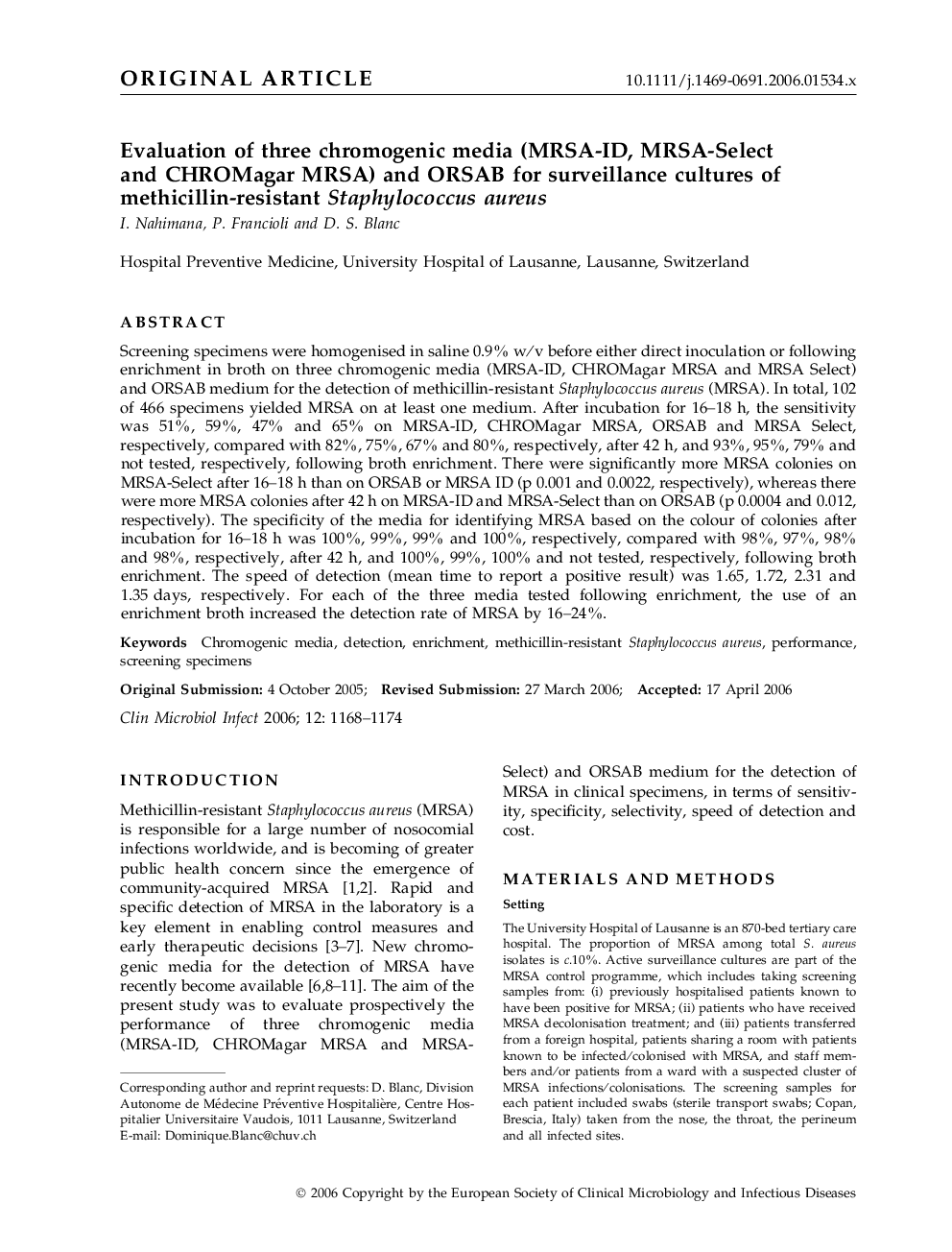| کد مقاله | کد نشریه | سال انتشار | مقاله انگلیسی | نسخه تمام متن |
|---|---|---|---|---|
| 3398302 | 1222278 | 2006 | 7 صفحه PDF | دانلود رایگان |

ABSTRACTScreening specimens were homogenised in saline 0.9% w/v before either direct inoculation or following enrichment in broth on three chromogenic media (MRSA-ID, CHROMagar MRSA and MRSA Select) and ORSAB medium for the detection of methicillin-resistant Staphylococcus aureus (MRSA). In total, 102 of 466 specimens yielded MRSA on at least one medium. After incubation for 16–18 h, the sensitivity was 51%, 59%, 47% and 65% on MRSA-ID, CHROMagar MRSA, ORSAB and MRSA Select, respectively, compared with 82%, 75%, 67% and 80%, respectively, after 42 h, and 93%, 95%, 79% and not tested, respectively, following broth enrichment. There were significantly more MRSA colonies on MRSA-Select after 16–18 h than on ORSAB or MRSA ID (p 0.001 and 0.0022, respectively), whereas there were more MRSA colonies after 42 h on MRSA-ID and MRSA-Select than on ORSAB (p 0.0004 and 0.012, respectively). The specificity of the media for identifying MRSA based on the colour of colonies after incubation for 16–18 h was 100%, 99%, 99% and 100%, respectively, compared with 98%, 97%, 98% and 98%, respectively, after 42 h, and 100%, 99%, 100% and not tested, respectively, following broth enrichment. The speed of detection (mean time to report a positive result) was 1.65, 1.72, 2.31 and 1.35 days, respectively. For each of the three media tested following enrichment, the use of an enrichment broth increased the detection rate of MRSA by 16–24%.
Journal: Clinical Microbiology and Infection - Volume 12, Issue 12, December 2006, Pages 1168–1174